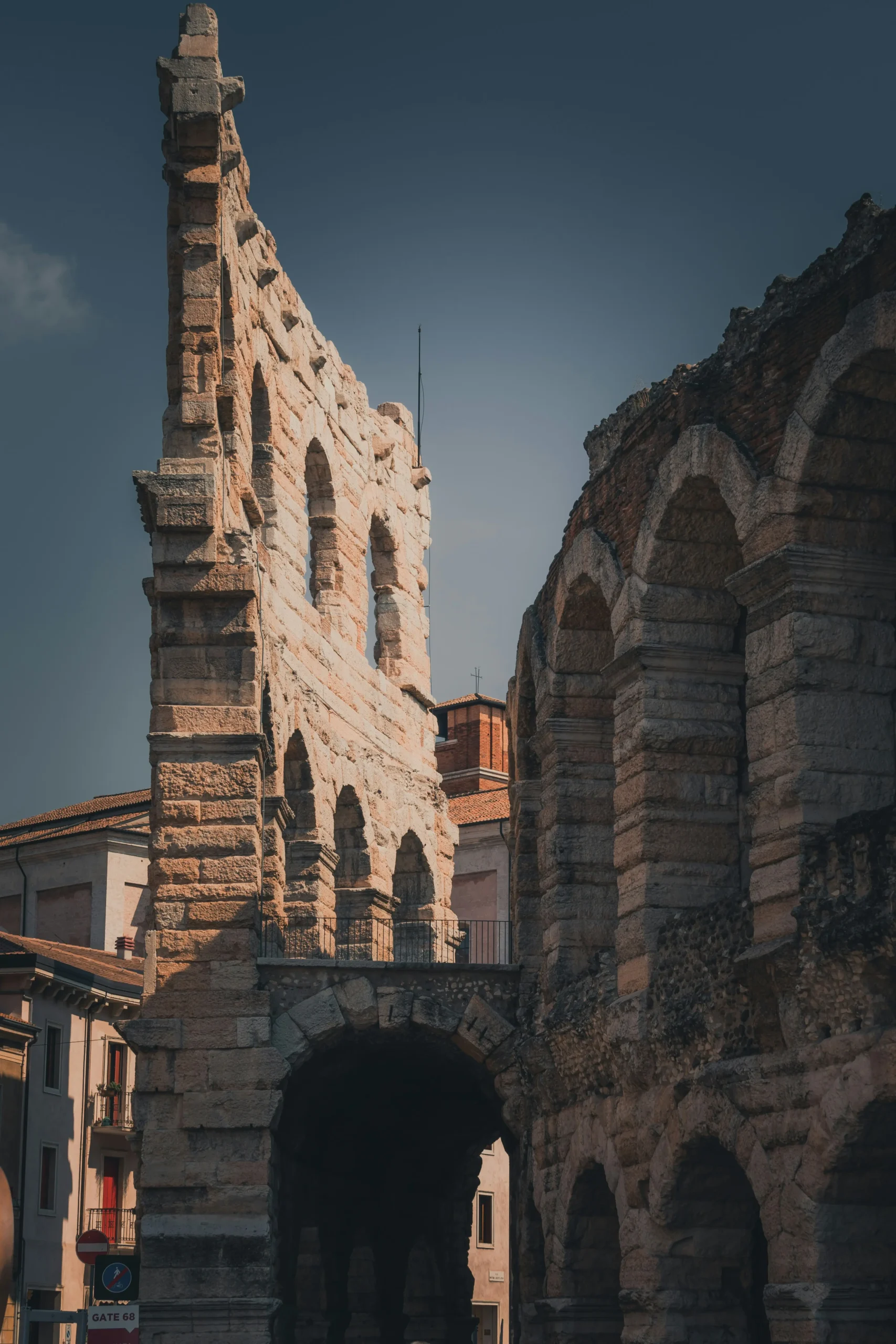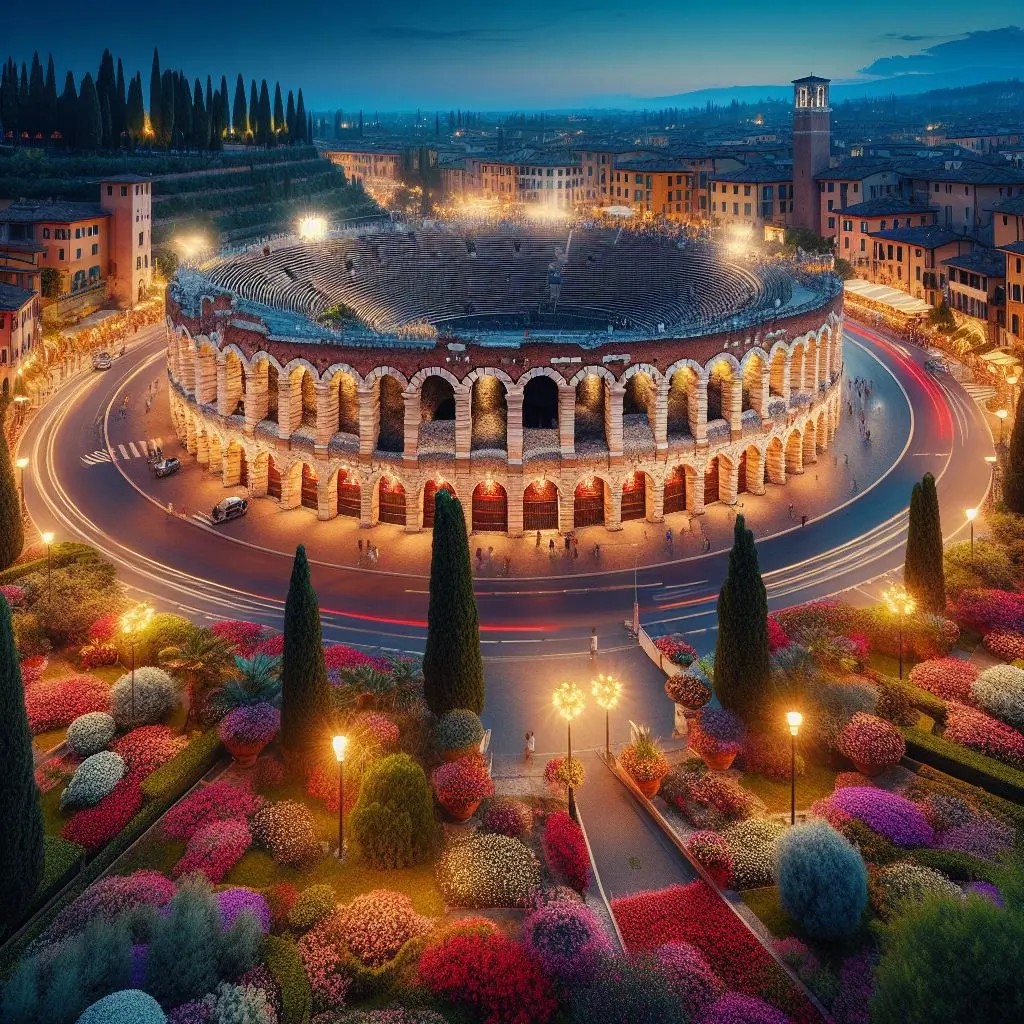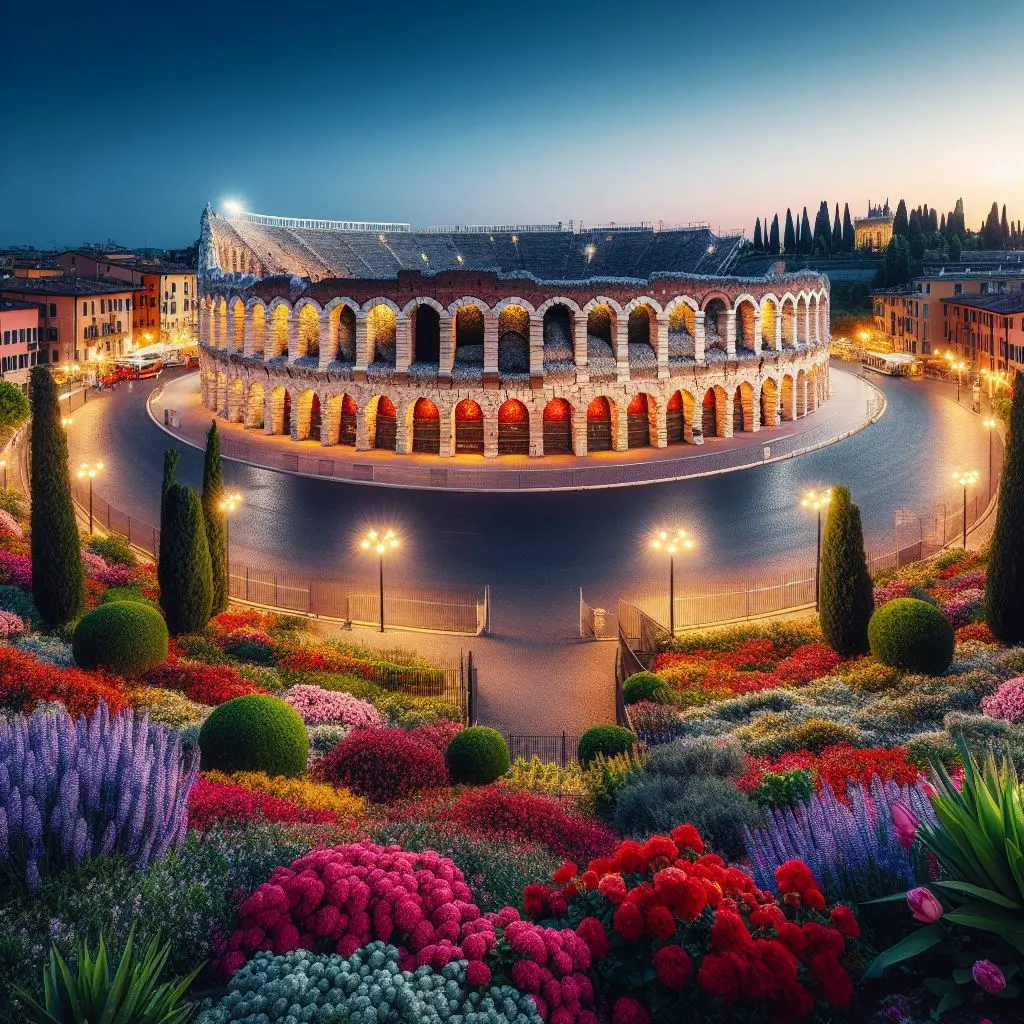The Verona Arena: 2 millennia of Marvel, History and Entertainment
When it comes to architectural wonders that have stood the test of time, few can rival the magnificence and historical significance of the Verona Arena. Located in the heart of Verona, Italy, this ancient amphitheater has captivated visitors for centuries with its grandeur, rich history, and vibrant cultural events.
The Verona Arena, also known as the Arena di Verona (in Italian), stands as a testament to the architectural prowess of the ancient Romans. Built in the 1st century AD, during the height of the Roman Empire, its construction was part of a larger initiative to create a monumental space for public spectacles. The amphitheater was designed to host a variety of events, ranging from gladiator fights and theatrical performances to chariot races and animal hunts.
As Verona was a thriving Roman colony, the need for a grand venue to entertain the masses was evident. The Verona Arena, with its seating capacity of up to 30,000 spectators, became one of the largest amphitheaters of its time. The elliptical shape and impressive stone facade were a testament to the engineering excellence of the Romans. Utilizing a combination of locally sourced limestone and imported pink marble, the amphitheater was a visual marvel, creating a stunning spectacle against the backdrop of the Veronese landscape.
A Timeless Icon
Despite the challenges posed by time and the elements, the Verona Arena has managed to endure through the ages. Its well-preserved structure stands as a testament to the quality of materials used in its construction, as well as the ongoing efforts of preservation and restoration by dedicated professionals and institutions. Built in the first century AD, during the Augustan period, the arena was originally located outside the city walls, on the banks of the river Adige. It was made from pink and white limestone from the nearby Valpolicella region, and it could host more than 30,000 spectators in ancient times.
Wandering through the corridors of the Verona Arena is like stepping back in time. The grandiosity of the amphitheater, coupled with its architectural finesse, offers a glimpse into the opulence and cultural richness of ancient Rome. Each stone, weathered by centuries, tells a story of gladiatorial combat, theatrical performances, and the vibrant life that once pulsed through this magnificent structure.
The arena was the stage for a variety of shows and games, from hunting wild animals to executing prisoners, from circus acts to music and dancing. The most popular and thrilling events were the gladiator fights, in which trained warriors battled each other to the death, while the crowd cheered or booed their fate. The word “arena” means sand, and it refers to the sand that covered the floor of the ring to absorb the blood spilled during the fights.
Today, the Verona Arena is still in use, and it is one of the best places in the world to see opera. Since 1913, when the first operatic production of Verdi’s Aida was staged to celebrate the composer’s centenary, the arena has hosted a yearly summer festival, featuring up to six different operas. The arena’s elliptical shape and stone walls provide excellent acoustics, and the atmosphere is enhanced by the candles that are distributed and lit by the audience after sunset.
The arena has also welcomed many contemporary artists, such as Pearl Jam, Adele, and One Direction, who have performed in front of thousands of fans. The Verona Arena is a living monument, a bridge between the past and the present, a symbol of the city’s artistic and historical heritage.
Architectural Marvels
Delving deeper into the architectural marvels of the Verona Arena unveils the intricate details that make it a masterpiece. The elliptical shape, designed for optimal visibility, ensures that every spectator had an unobstructed view of the events below. The tiered seating, divided into different sections based on social class, reflects the hierarchical structure of Roman society.
The exterior facade, adorned with arches and columns, exemplifies the classical Roman architectural style. The use of pink marble not only added to the aesthetic appeal but also symbolized the wealth and power of the Roman Empire. The ingenuity of the Romans in creating such a massive structure without modern construction equipment is a testament to their engineering prowess.
Restoration Efforts
While the Verona Arena has weathered the passage of time admirably, ongoing restoration efforts have played a crucial role in its preservation. Preservationists and archaeologists meticulously work to ensure that the integrity of the structure remains intact. This delicate balance between preserving the historical authenticity and catering to the demands of modern tourism requires a nuanced approach.
Technological advancements have facilitated these restoration efforts, allowing experts to employ state-of-the-art techniques while respecting the historical fabric of the arena. The commitment to maintaining the Verona Arena as a living historical monument ensures that future generations can continue to marvel at its grandeur.
Historical Significance
Beyond its architectural brilliance, the Verona Arena holds immense historical significance. As a venue for gladiator contests during the Roman era, it witnessed epic battles that were not just displays of physical prowess but also reflections of the cultural and political climate of the time. The roaring crowds, the clash of weapons, and the spectacles of bravery all contributed to the unique tapestry of ancient Roman entertainment.
The Verona Arena has withstood the challenges of changing civilizations, serving various purposes throughout the ages. In the medieval period, it became a fortress, providing refuge during times of conflict. The adaptive nature of the arena speaks to its resilience, mirroring the adaptive spirit of the city of Verona itself.
A Symbol of Verona’s Heritage
Beyond its role as an architectural marvel, the Verona Arena has become an enduring symbol of Verona’s rich history and cultural heritage. The amphitheater is not merely a relic of the past but a living testament to the city’s resilience and adaptability over the centuries.
Tourists from around the world flock to Verona to marvel at the Arena’s architectural splendor and immerse themselves in the vibrant atmosphere within its walls. The Verona Arena has become an iconic landmark, contributing to the city’s identity and serving as a beacon for those eager to explore the intersection of history, art, and culture.
A Venue for Cultural Events
While the Verona Arena was initially constructed for gladiatorial contests and other spectacles of the Roman era, its purpose has evolved over the centuries. Today, the arena serves as a versatile venue for a wide array of cultural events, bringing together the past and present in a harmonious celebration of human creativity.
One of the highlights of the Verona Arena’s cultural calendar is the world-famous Verona Arena Opera Festival. During the summer months, the amphitheater transforms into an open-air opera house, enchanting audiences with breathtaking performances under the starry sky. Opera enthusiasts from far and wide converge on Verona to witness classic operas performed in a setting that adds a touch of magic to each note.
Moreover, the Verona Arena has played host to concerts by some of the most renowned artists in the world. From the timeless melodies of Elton John to the progressive sounds of Pink Floyd and the electrifying performances of Muse, the arena has embraced a modern role while preserving its historical significance. This fusion of the ancient and the contemporary further emphasizes the Verona Arena’s relevance in the cultural landscape.
Exploring Verona’s Cultural Tapestry
The Verona Arena is not an isolated historical site but an integral part of Verona’s broader cultural tapestry. The city itself, with its medieval architecture, charming squares, and bustling markets, provides a backdrop that complements the grandeur of the amphitheater. Exploring Verona is a journey through different epochs, from the Roman foundations to the medieval and Renaissance influences that have shaped the city.
The Verona Arena acts as a gateway to Verona’s rich cultural heritage. Visitors can stroll through the Piazza delle Erbe, the historic market square, and marvel at the Lamberti Tower, a medieval masterpiece that offers panoramic views of the city. The House of Juliet, with its iconic balcony, adds a touch of Shakespearean romance to the experience. Each cobblestone street and ancient archway tells a story, inviting travelers to immerse themselves in the unique blend of history and modern life that defines Verona.
A Must-Visit Destination
Visiting the Verona Arena is not just a sightseeing excursion; it is a truly immersive experience that allows visitors to connect with the grandeur of ancient Rome. As you walk through the stone corridors, climb the steep steps, and gaze upon the vast seating area, a sense of awe and wonder envelops you.
The Verona Arena is a destination that appeals to a diverse range of interests. For history enthusiasts, it provides a tangible link to the past, offering insights into the architectural and cultural achievements of the Roman Empire. For opera lovers, the arena becomes a sacred space where the timeless art form takes on new dimensions under the open sky. And for those simply seeking a unique cultural experience, the Verona Arena’s rich history, architectural beauty, and vibrant atmosphere make it an unmissable stop when exploring the charming city of Verona.
The immersive experience extends beyond the arena itself. Surrounding the amphitheater, the city of Verona unfolds like a living museum, with cobbled streets, historic buildings, and charming piazzas that complement the grandeur of the Verona Arena. It’s a city that invites exploration, where every corner holds a piece of history waiting to be discovered.
Culinary Delights and Veronese Traditions
Verona is not only a treasure trove of historical and architectural wonders but also a haven for culinary enthusiasts. The city’s gastronomic delights reflect its rich cultural heritage, combining traditional recipes with modern influences.
As you wander through Verona’s streets, the aroma of freshly brewed coffee and the tempting scent of local delicacies waft through the air. From classic Italian pasta dishes to Veronese specialties such as Risotto al Nero di Seppia (black squid ink risotto) and Pastissada de Caval (slow-cooked horse meat stew), the city’s culinary scene offers a journey into the diverse flavors of the region.
Pairing the visit to the Verona Arena with a culinary exploration adds another layer to the overall experience. Local trattorias and osterias invite you to savor Veronese wines, including the renowned Amarone, a red wine crafted from dried grapes. The convivial atmosphere of these establishments provides an opportunity to engage with locals, learn about Veronese culinary traditions, and indulge in the pleasures of Italian cuisine.
Verona’s Festivals and Celebrations
Beyond its everyday charm, Verona comes alive during its festivals and celebrations, adding a dynamic element to the cultural tapestry of the city. From historical reenactments to lively music festivals, these events showcase Verona’s vibrant spirit and its commitment to preserving and celebrating its traditions.
One notable celebration is the Carnival of Verona, a lively event filled with parades, masked balls, and colorful costumes. Dating back to medieval times, the carnival captures the essence of Veronese folklore and provides a glimpse into the city’s historical pageantry.
Similarly, the Feast of Saint Lucy, celebrated on December 13th, is a religious and cultural event that honors the patron saint of Verona. The city is adorned with lights and decorations, and a procession through the streets adds a sense of solemnity and festivity to the occasion.
These festivals offer visitors a chance to immerse themselves in the local culture, witness age-old traditions, and participate in the joyous atmosphere that defines Verona during these special times.
Verona’s Artistic Legacy
Verona’s artistic legacy extends beyond the grandeur of the Verona Arena. The city is home to an array of museums, galleries, and historical sites that showcase a rich tapestry of artistic expression.
The Castelvecchio Museum, housed in a medieval fortress, boasts an extensive collection of Veronese art from the Middle Ages to the Renaissance. Paintings, sculptures, and decorative arts offer insights into the artistic evolution of the region.
The Basilica di San Zeno Maggiore, a masterpiece of Romanesque architecture, not only serves as a religious landmark but also houses stunning artworks, including the famous altarpiece by Andrea Mantegna. The blend of architectural splendor and artistic treasures in this basilica encapsulates the multifaceted cultural heritage of Verona.
For those fascinated by the intersection of art and literature, a visit to Juliet’s House is a must. The iconic balcony is said to have inspired William Shakespeare’s Romeo and Juliet, and the house itself is a testament to the enduring legacy of this timeless tale of love and tragedy.
Verona’s Artistic Underground
Beneath the bustling streets of Verona lies a hidden world of artistic treasures. The Scaliger Tombs, a series of Gothic funerary monuments, showcase intricate sculptures and architectural details. These tombs, the final resting place of the powerful Scaliger family, provide a glimpse into Verona’s medieval past and the artistic achievements of the time.
The Roman Theater Archaeological Museum offers a fascinating journey into Verona’s Roman history. The museum houses artifacts from the Roman Theater, shedding light on the daily lives, customs, and artistic expressions of the ancient inhabitants of Verona.
Street Art and Modern Expressions
Verona’s artistic landscape is not confined to classical masterpieces; it also embraces modern expressions, including vibrant street art. The city’s streets and alleyways serve as a canvas for contemporary artists, adding a dynamic and evolving layer to Verona’s visual language.
Exploring the street art scene provides a different perspective on Verona’s artistic identity. From colorful murals that reflect social and environmental themes to abstract expressions that challenge traditional notions of art, Verona’s street art scene invites visitors to engage with the city’s creative pulse in unexpected places.
Conclusion
In conclusion, the Verona Arena stands as a living testament to the ingenuity and craftsmanship of the ancient Romans. Its ancient origins, well-preserved structure, and diverse range
of cultural events have made it an enduring symbol of Verona’s past and present. When you find yourself in Verona, stepping into the Verona Arena is not just a visit to a historical site; it’s an immersion into the magic of a bygone era and an opportunity to witness the enduring beauty and cultural resonance of this fantastic arena.
Whether you are a history enthusiast, an opera aficionado, or simply a traveler seeking a unique and enriching experience, the Verona Arena beckons you to take a step into history. As you wander through its majestic corridors and stand within the ancient walls, the magic of this fantastic arena envelops you. It’s not merely a structure frozen in time; rather, it’s a dynamic force that bridges the gap between Verona’s rich past and its vibrant present. So, the next time you find yourself in Verona, ensure you make the most of the opportunity to explore, appreciate, and be captivated by the enduring beauty of the Verona Arena.
The city of Verona, with its charming streets, historical landmarks, culinary delights, and artistic treasures, offers a multifaceted experience that goes beyond the confines of time. It is a city where the past seamlessly blends with the present, creating a cultural tapestry that captivates the senses and leaves a lasting impression on those who explore its wonders. Verona invites you to not only witness its history but to become a part of its ongoing narrative, where every cobblestone and every note of music tells a story of a city that has thrived through the ages, leaving an indelible mark on the hearts of those who discover its enchanting secrets.
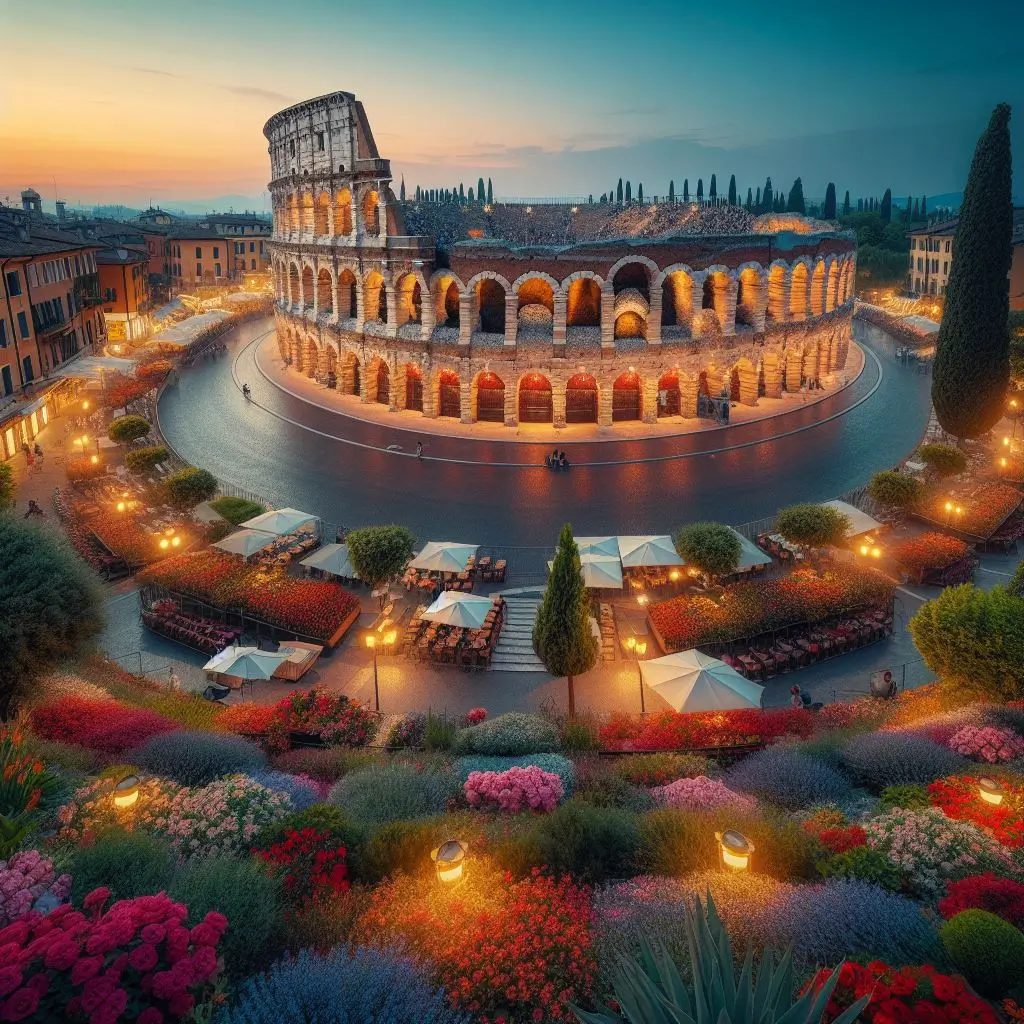
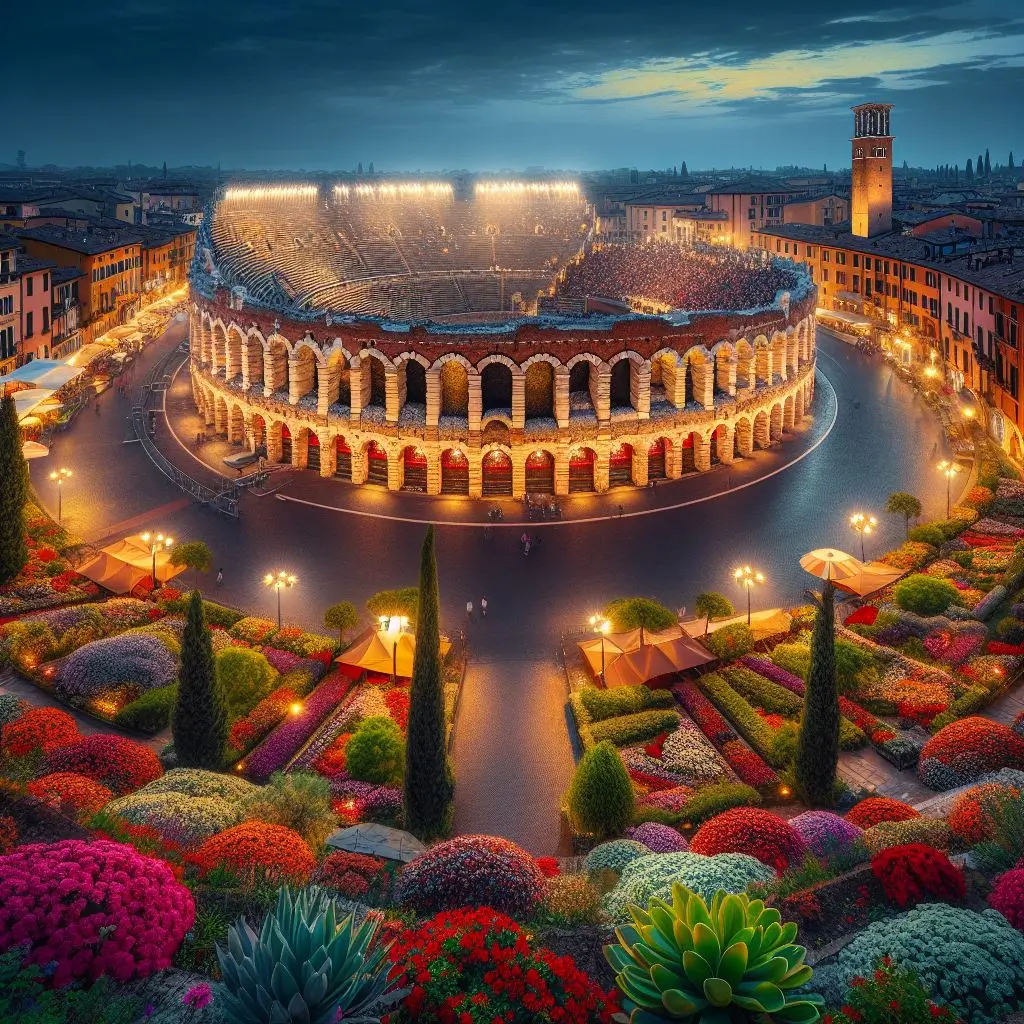
Arena website
